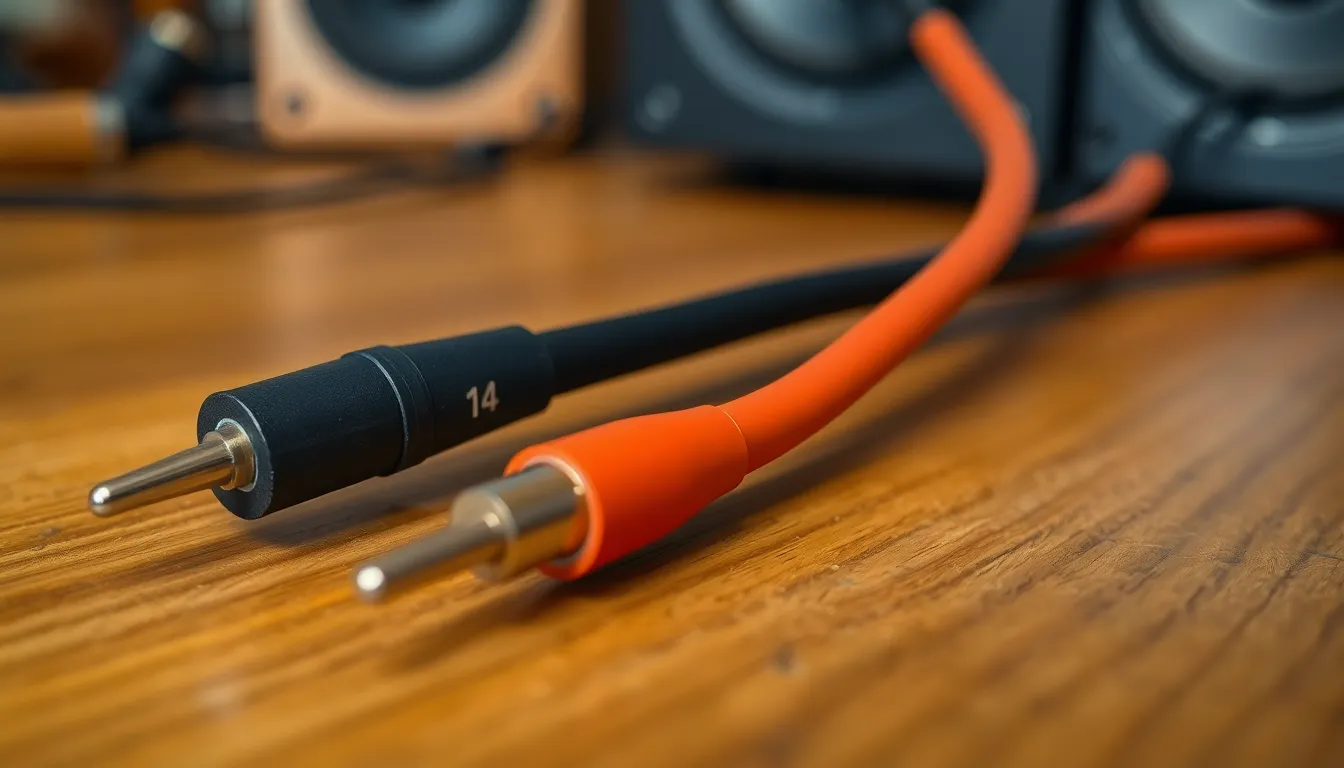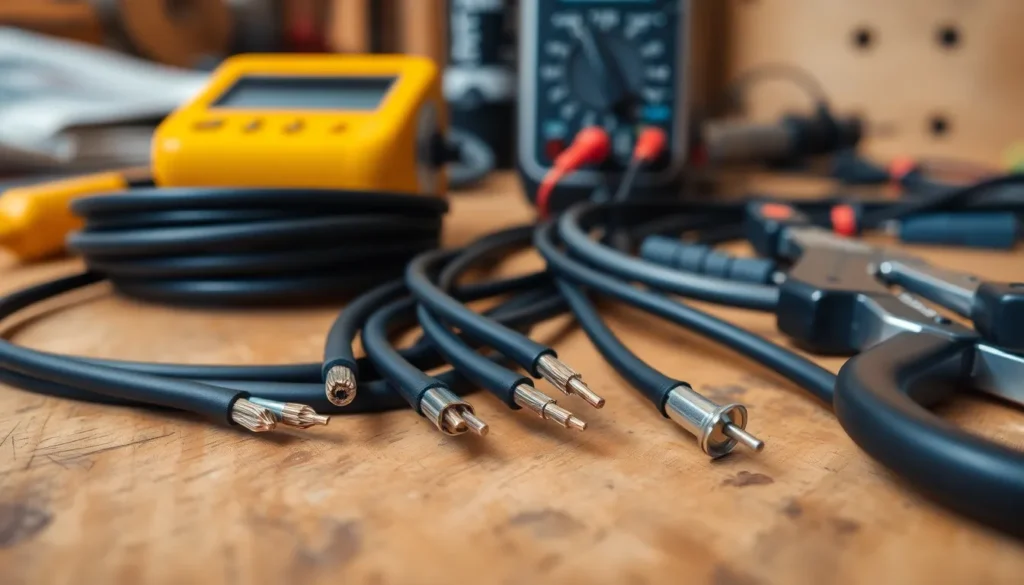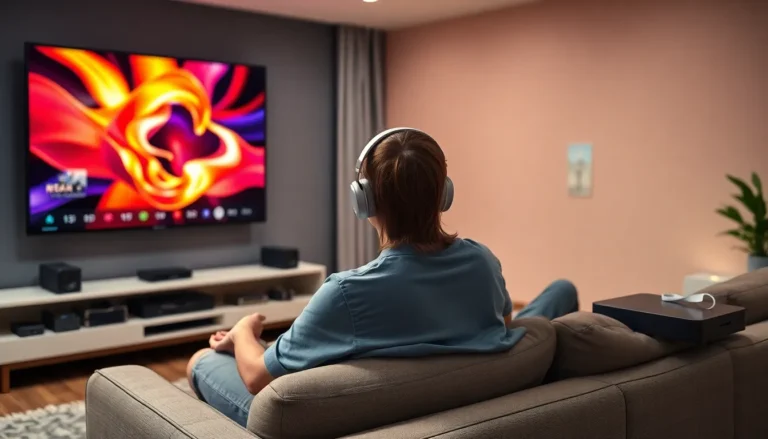When it comes to audio setups, speaker wire gauges often get overlooked, much like that last slice of pizza at a party. But choosing the right gauge can make all the difference between a sound experience that’s music to your ears and one that’s as flat as a day-old soda. With wires that range from thin as a spaghetti strand to thick enough to double as a rope, understanding these gauges is crucial for achieving optimal sound quality.
Think of speaker wire gauges as the unsung heroes of your audio system. They’re the secret sauce that helps deliver crisp highs and booming lows without a hitch. So before you dive into your next home theater project, let’s unravel the mystery of speaker wire gauges and ensure your sound system doesn’t just play music—it brings the concert right into your living room.
Table of Contents
ToggleUnderstanding Speaker Wire Gauges
Speaker wire gauges play a crucial role in audio setups, impacting sound quality significantly. Choosing the right gauge ensures a better listening experience.
What Is a Speaker Wire Gauge?
A speaker wire gauge refers to the thickness of the wire used to connect speakers to an audio system. Wire gauges are measured using the American Wire Gauge (AWG) system, with lower numbers indicating thicker wires. Common gauges include 12, 14, 16, and 18, each suited for different audio applications. Thicker wires can carry more current, making them ideal for longer distances or higher power systems. Conversely, thinner wires may suffice for shorter runs or lower-powered setups.
Importance of Wire Gauge in Audio Quality
Wire gauge significantly influences audio quality by affecting resistance, which can lead to power loss. Thicker wires reduce resistance, enabling more power to reach speakers. This can enhance clarity in highs and improve depth in lows. Standard recommendations suggest using 12 or 14 gauge for long runs exceeding 50 feet, while 16 gauge works well for shorter distances. Adequate gauge selection ensures better sound performance, contributing to an overall improved audio experience in home theater systems.
Common Speaker Wire Gauges

Different speaker wire gauges play vital roles in achieving sound quality in audio systems. The American Wire Gauge system categorizes wire thickness, with lower numbers indicating thicker wires.
12 Gauge Wire
12 gauge wire serves as an excellent option for high-power applications. It delivers improved current capacity, making it suitable for long runs exceeding 50 feet. Many audiophiles prefer this gauge for subwoofers due to its ability to minimize power loss, ensuring strong bass response. In home theater setups, using 12 gauge enhances clarity across the frequency spectrum, benefiting both highs and lows. This wire type remains standard for providing a robust audio experience, particularly in larger spaces.
14 Gauge Wire
14 gauge wire strikes a balance between flexibility and performance. Suitable for runs up to 50 feet, it performs well in medium-powered systems. Many installers recommend this gauge for typical home audio systems, including bookshelf speakers and satellite speakers. Resistance remains manageable, providing efficient power delivery while maintaining sound quality. Users often find this wire an optimal choice for various applications, delivering solid audio without unnecessary bulk.
16 Gauge Wire
16 gauge wire functions well for shorter runs, typically less than 50 feet. Its thinner profile suits lower-powered systems where space and weight matter. This wire type often appears in budget audio setups and small to medium-sized rooms. Clarity remains acceptable for most listening environments, though it may not deliver the same depth in sound as thicker gauges. Those seeking an economical solution for straightforward audio installations frequently opt for this versatile wire.
Choosing the Right Gauge for Your Setup
Choosing the right speaker wire gauge significantly impacts sound quality. Factors such as distance, power requirements, and system type determine the appropriate gauge.
Factors to Consider
Distance between the audio source and speakers affects wire gauge selection. Longer cables require thicker wires to minimize resistance and power loss. Power output of the amplifier also plays a role. Higher powered systems benefit from lower gauge numbers, as they can handle increased current without degradation. Speaker impedance should be considered; lower impedance speakers typically require thicker wire for optimal performance. Lastly, flexibility and installation space may influence gauge choice, especially in tight areas or when routing cables.
Recommendations for Different Situations
For long runs exceeding 50 feet, 12 or 14 gauge wire is recommended to maintain audio clarity. Medium-powered systems often perform well with 14 gauge, balancing flexibility and sound quality. Shorter distances of around 25 feet or less often work fine with 16 gauge wire, especially in budget setups. For subwoofers or high-power applications, 12 gauge proves optimal, as it handles increased current efficiently. Each setup calls for its specific gauge, ensuring the best audio experience in any environment.
Benefits of Using the Correct Gauge
Using the correct speaker wire gauge significantly enhances overall audio performance. Proper gauge choice not only affects sound quality but also influences system efficiency.
Enhanced Sound Quality
High-quality audio depends on the wire gauge used in a system. Thicker wires, such as 12 or 14 gauge, reduce resistance, allowing more power to reach speakers. Increased power translates to clearer highs and deeper lows in music. Poor quality occurs when thinner wires are used, leading to lost audio clarity. Auditory details often disappear, especially in long runs exceeding 50 feet. Listening experiences improve when the right gauge is selected for the application.
Improved Efficiency and Safety
Efficiency in audio systems improves with the correct wire gauge. Thicker wires carry more current safely, minimizing the risk of overheating or electrical issues. In setups with high power demands, using a 12 gauge wire provides the necessary current without loss. Longer runs benefit from reduced resistance, which leads to better audio performance. Subwoofers and high-powered systems particularly require thicker wires for optimal results. Choosing the correct gauge promotes safe operation and sustains system reliability.
Choosing the right speaker wire gauge is crucial for achieving optimal audio performance. By understanding the differences among gauges and their specific applications, individuals can significantly enhance their listening experience. Whether it’s for high-power subwoofers or budget-friendly setups, selecting the appropriate wire ensures clarity and depth in sound. Investing time in this often-overlooked aspect of audio systems pays off in the long run. Prioritizing the correct gauge not only improves sound quality but also promotes safety and efficiency in home theater projects. It’s clear that the right speaker wire can make all the difference in enjoying a superior audio experience.






